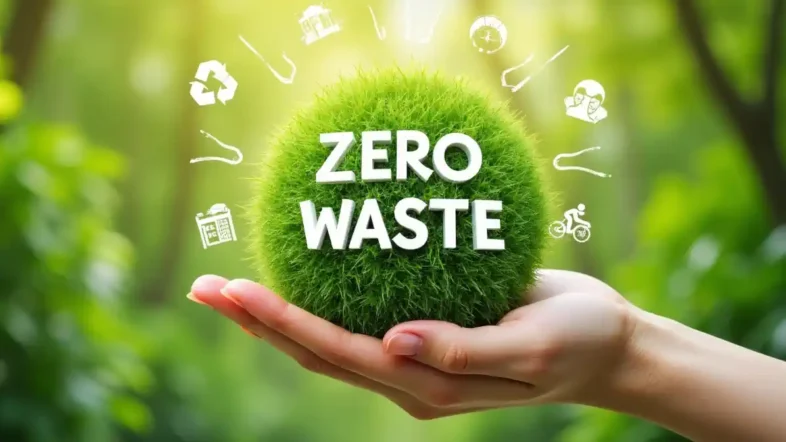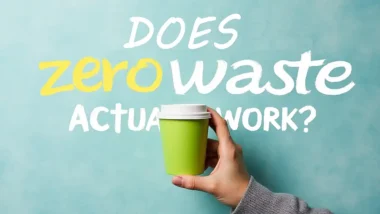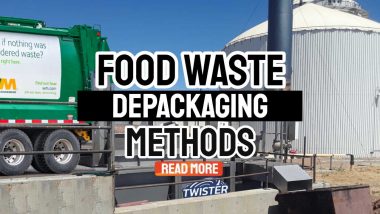Zero waste disposal, or more accurately, “zero waste to landfill,” is a strategy focused on minimising waste sent to landfills by diverting it through various techniques like recycling, reuse, composting, and energy recovery. It's a concept that aims to conserve resources and reduce environmental impact by finding value in discarded materials.
While “zero waste” itself can refer to broader waste prevention strategies, “zero waste to landfill” specifically targets reducing waste sent to landfills.
Key Takeaways
- Composting diverts up to 30% of household waste from landfills while creating nutrient-rich soil for gardens and plants.
- The most effective zero waste strategy is refusing and reducing waste before it enters your home through mindful purchasing decisions.
- Proper recycling preparation (cleaning, sorting, and removing labels when necessary) dramatically increases the likelihood that materials will actually be recycled.
- Zero Waste systems like Bokashi fermentation and vermicomposting make sustainable disposal possible even in small apartments with no outdoor space.
- Community resources like Buy Nothing groups and speciality recycling centres can help manage items that don't fit into conventional disposal streams.
The journey toward zero waste isn't about perfection—it's about progress. Every single disposal decision we make carries environmental weight, from tossing a coffee cup to choosing how to handle food scraps. The good news? Small, consistent changes in how we dispose of our waste can create remarkable ripple effects for our planet. As someone who's transformed my own waste habits over the years, I've discovered the most effective methods aren't just about finding better ways to throw things away—they're about reimagining our relationship with “stuff” entirely.
The Waste Crisis: Why Zero Waste Matters Now
We're facing a disposal emergency of unprecedented scale. The average American generates nearly 4.5 pounds of trash daily—that's about 1,642 pounds per person annually. This massive waste stream isn't just disappearing when it leaves our homes. It's piling up in landfills, contaminating waterways, and contributing to climate change through methane emissions from decomposing organic matter.
The Environmental Impact of Our Trash
When waste reaches landfills, it doesn't simply vanish. Organic materials like food scraps break down without oxygen in these compressed environments, releasing methane—a greenhouse gas 25 times more potent than carbon dioxide. Meanwhile, plastics fragment into microplastics that infiltrate our water systems and food chain. Even recycling, while beneficial, requires energy and resources to process materials. The extraction of new resources to replace discarded items further damages ecosystems through mining, deforestation, and habitat destruction. These connected impacts create a cascade of environmental damage that extends far beyond our trash cans.
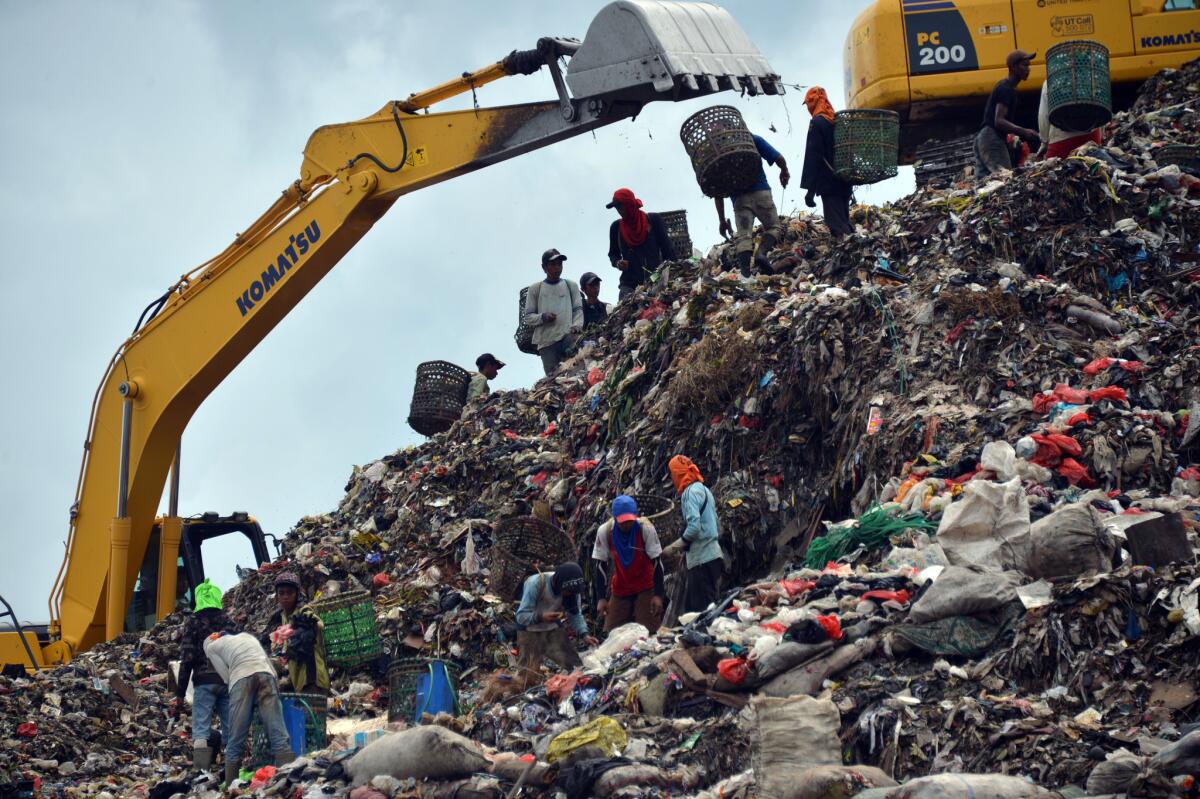
“The world's trash crisis, and why many …” from www.latimes.com and used with no modifications.
Beyond Recycling: Understanding True Zero Waste
While recycling has dominated environmental messaging for decades, true zero waste thinking extends much further. The zero waste philosophy operates on a hierarchy that prioritises refusing unnecessary items first, then reducing consumption of necessities, reusing what we have, recycling what can't be reused, and finally, rotting (composting) organic materials. This approach aims to send nothing to landfills, incinerators, or the ocean by redesigning how resources flow through society. Zero Waste isn't about perfect waste elimination—it's about systematically avoiding waste creation from the start. For more insights, explore top reasons for recycling and how it fits into the broader zero waste strategy.
The most successful zero waste practitioners focus on upstream solutions rather than better disposal methods. By addressing consumption habits first, they dramatically reduce what needs to be disposed of in the first place. This mindset shift transforms sustainability from a burden of constant guilt into an empowering framework for making thoughtful choices. For instance, understanding the top reasons for recycling can further support these sustainable practices.
![]()
“Backyard Composting | City of …” from www.alexandriava.gov and used with no modifications.
Composting: Nature's Recycling System
Composting stands as perhaps the most transformative zero waste practice available to households. Food scraps and yard waste make up approximately 30% of what we throw away—material that could be transformed into valuable soil amendment instead of creating methane in landfills. The composting process mimics nature's recycling system, breaking down organic matter into humus—the stable, nutrient-rich foundation of healthy soil. For more tips on reducing waste, visit this guide on waste reduction.
Backyard Composting for Beginners
Starting a backyard compost system requires minimal investment but delivers substantial environmental returns. The simplest approach involves creating a balanced mix of “greens” (nitrogen-rich materials like food scraps and fresh plant trimmings) and “browns” (carbon-rich materials like dried leaves, cardboard, and wood chips). This balance provides the ideal conditions for decomposer organisms to break down waste efficiently. A basic compost pile can be as straightforward as designating a corner of your yard for organic materials, though contained systems like bins or tumblers help manage the process more effectively, especially in urban environments or areas with wildlife concerns.
When building your compost, aim for roughly equal parts green and brown materials by volume. Chop larger items into smaller pieces to speed decomposition, and turn the pile regularly with a garden fork to incorporate oxygen, which helps beneficial microbes thrive while preventing odours. Properly maintained compost shouldn't smell unpleasant—a strong odour typically indicates too many greens or too much moisture. With consistent attention, you'll have finished compost in three to twelve months, depending on your climate and management approach.
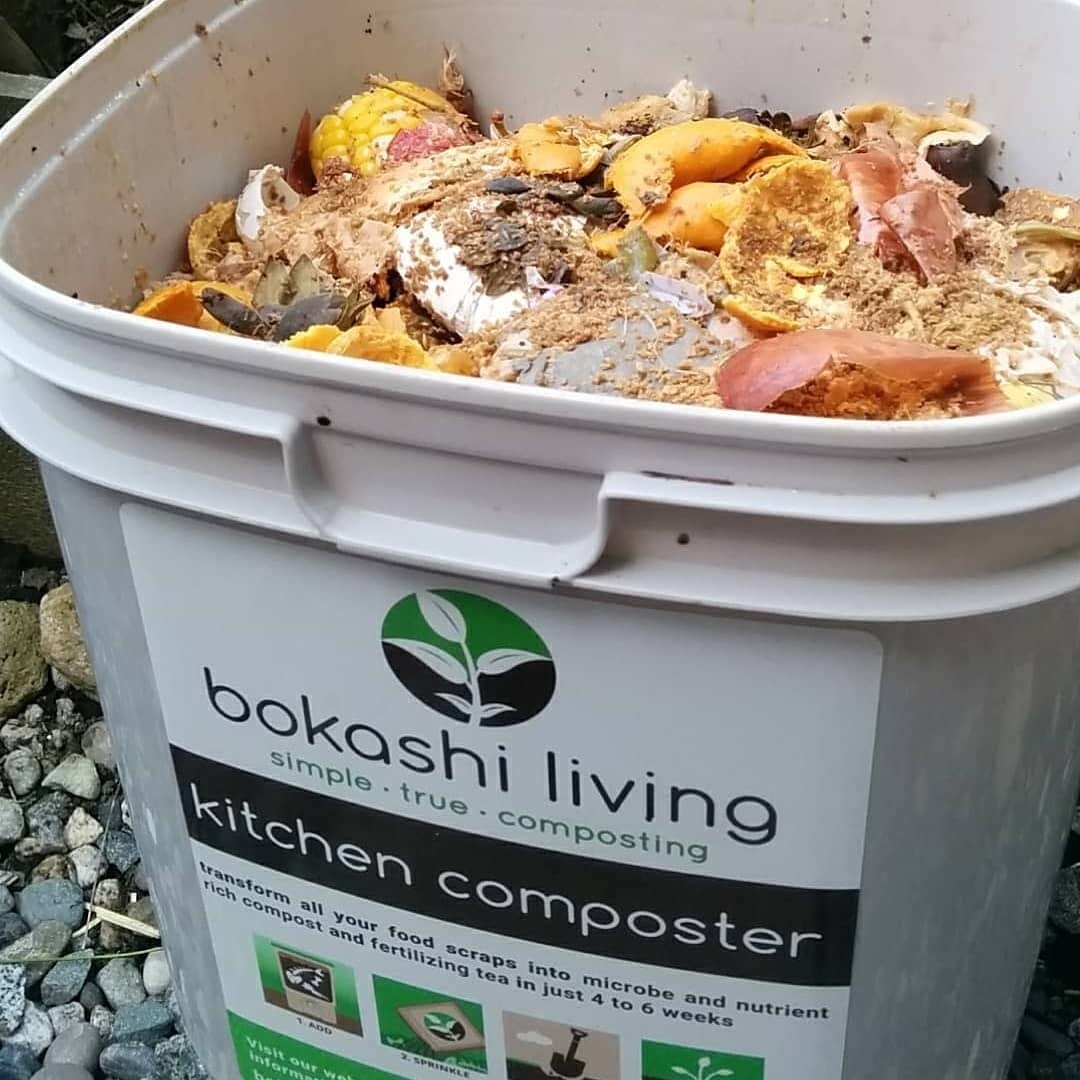
“bokashi pre-compost …” from bokashiliving.com and used with no modifications.
Apartment-Friendly Options: Bokashi and Vermicomposting
Limited space doesn't mean composting is off the table. Two excellent indoor alternatives have gained popularity among urban zero waste enthusiasts: Bokashi fermentation and vermicomposting. Bokashi uses a special mix of microorganisms to ferment food waste (including meat and dairy that traditional compost can't handle) in an airtight container. The process produces a nutrient-rich pre-compost that can be buried in garden soil or added to a traditional compost pile to complete decomposition. The system is odor-free when properly maintained and requires minimal space—typically just a countertop bucket.
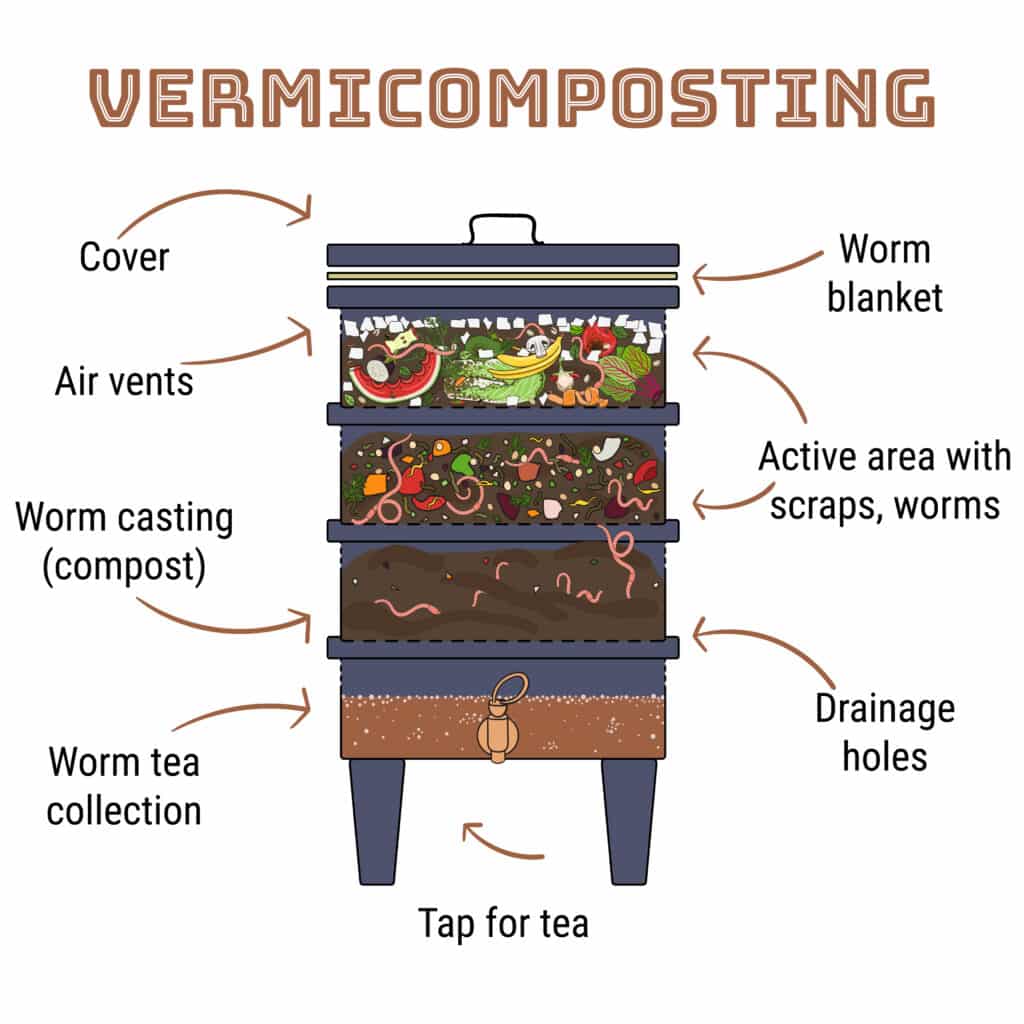
“Vermicomposting: Let's Get Started …” from www.timetorecycle.org and used with no modifications.
Vermicomposting
Vermicomposting harnesses the digestive power of red wriggler worms to process food scraps into worm castings—perhaps the most valuable compost available. A typical worm bin consists of a shallow container with bedding material (like shredded newspaper) where worms consume food waste and create nutrient-dense castings. These compact systems can thrive under a sink or in a closet, producing virtually no odor when managed correctly. Worm castings make exceptional fertilizer for houseplants and container gardens, creating a perfect closed-loop system for apartment dwellers.
What Can (and Cannot) Be Composted
Successful composting depends on knowing what materials break down effectively. Generally, plant-based food scraps, coffee grounds, tea bags (without staples), yard waste, paper products, and natural fibers like cotton and wool can go into traditional compost systems. Items to avoid include meat, dairy, oils, pet waste, diseased plants, and anything treated with pesticides. These materials either break down too slowly, attract pests, or introduce harmful pathogens to your compost. When in doubt, research specific items before adding them to your system—composting guidelines have evolved with better science, and many items once considered problematic are now known to compost safely.
For newer composters, start with the basics: fruit and vegetable scraps, coffee grounds, and yard trimmings. As you gain confidence, gradually expand to include eggshells, paper products, and other compostables. This gradual approach helps you understand how different materials break down in your specific system and climate conditions. For more tips, check out this guide on zero waste tips.
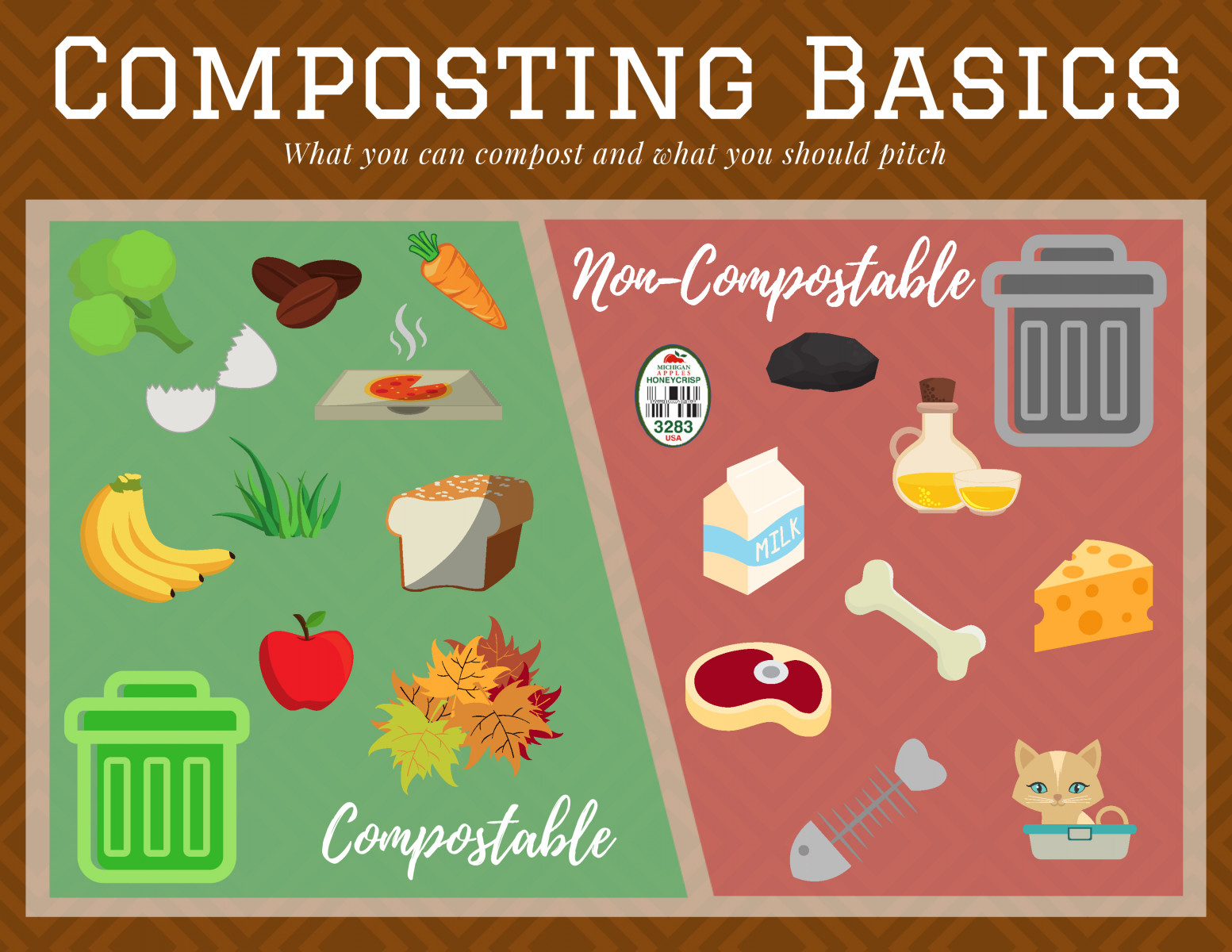
“avoiding composting …” from planetforward.org and used with no modifications.
Using Your Finished Compost
Finished compost appears dark, crumbly, and earthy-smelling—like rich forest soil. This “black gold” serves countless purposes in sustainable living. Mix it into garden beds to improve soil structure and add nutrients, use it to make compost tea for houseplants, apply it as a top dressing for lawns, or offer it to gardening neighbors if you produce more than you need. Beyond gardening applications, compost represents the perfect embodiment of zero waste principles: transforming what would have been “waste” into a valuable resource that nourishes new life.
Smart Recycling Practices That Actually Work
While reduction deserves priority in zero waste hierarchies, strategic recycling remains an essential component of responsible waste management. However, many well-intentioned recycling efforts actually contaminate recycling streams, potentially causing more materials to end up in landfills. Effective recycling requires understanding your local program's specific requirements and preparing materials correctly.
Common Recycling Mistakes to Avoid
“Wishcycling”—placing items in recycling bins hoping they'll be recycled despite uncertainty—creates significant problems in recycling facilities. Contamination from non-recyclable items, food residue, or materials combined in ways that can't be separated (like paper coffee cups with plastic linings) forces recyclers to landfill otherwise recoverable materials. Many people also mistakenly recycle items that theoretically could be recycled but aren't accepted in their local programs, like plastic bags in curbside bins or Styrofoam containers that require specialized recycling channels.
Another frequent mistake involves not breaking down cardboard boxes, which take up excessive space in collection vehicles and bins. Understanding these common pitfalls helps ensure your recycling efforts genuinely divert materials from landfills rather than creating additional processing burdens.
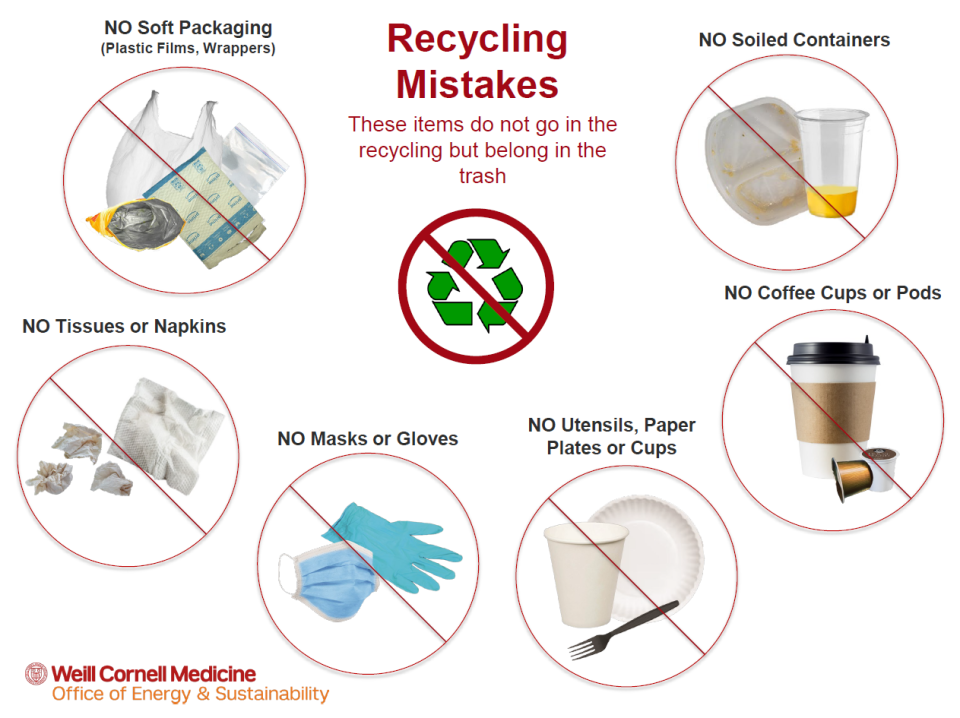
“Common Recycling Mistakes | Office of …” from sustainability.weill.cornell.edu and used with no modifications.
How to Prep Materials for Recycling
Proper preparation dramatically increases the likelihood your recyclables will actually be recycled. Clean containers thoroughly—food residue contaminates entire loads of recyclables, potentially rendering them unprocessable. Remove labels from glass jars when possible, and separate components made from different materials (like removing plastic windows from paper envelopes). Break down cardboard boxes to save space, and avoid bagging recyclables unless specifically instructed by your local program.
Take time to learn your community's specific recycling guidelines, which vary significantly between locations based on available processing facilities. Most municipalities provide detailed recycling guides online, often with searchable databases for specific items. Some communities also offer recycling apps that scan barcodes to provide disposal instructions for packaged products. This research might seem tedious initially, but quickly becomes second nature and ensures your efforts actually benefit recycling systems.
Hard-to-Recycle Items: Creative Solutions
Certain materials fall outside standard recycling programs but can still avoid landfills through specialized channels. Electronics, batteries, light bulbs, textiles, and many plastic films require dedicated recycling streams. Retailers like Best Buy, Home Depot, and many grocery stores offer collection points for specific hard-to-recycle items. For electronics, look for e-waste collection events, which typically occur several times yearly in most communities. TerraCycle programs provide recycling options for many traditionally non-recyclable items like cosmetic packaging, writing instruments, and food wrappers, though many require purchasing mail-back containers or finding sponsored drop-off locations.
Hard-to-Recycle Items Directory
• Plastic bags/film: Most grocery stores (look for bins near entrances)
• Electronics: Best Buy, Staples, local e-waste events
• Batteries: Home improvement stores, battery specialty shops
• Light bulbs: IKEA, Home Depot, Lowe's
• Paint: PaintCare drop-off sites (in states with programs)
• Textiles (even damaged): H&M, North Face, many thrift stores
• Corks: Whole Foods, wine specialty shops
• Eyeglasses: LensCrafters, Lions Club collection boxes
• Medication: DEA Take-Back events, many pharmacies
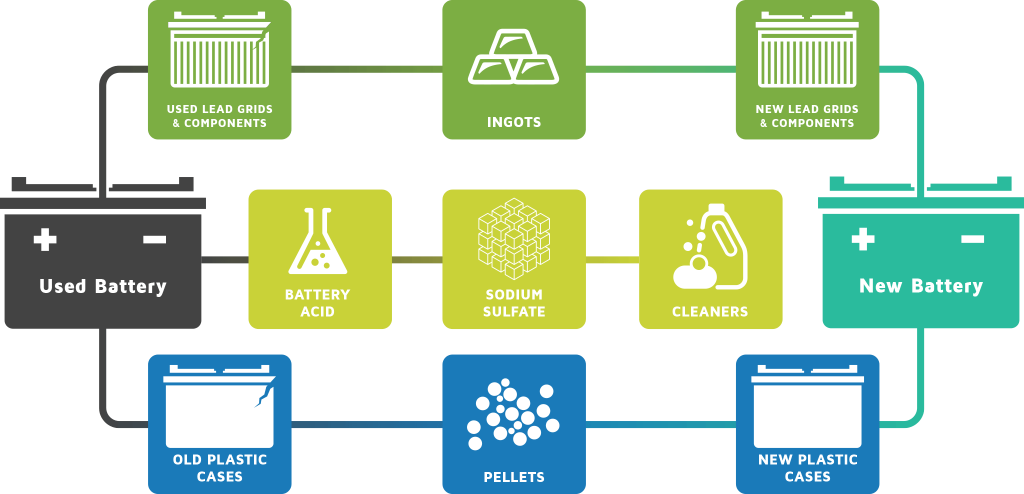
“to recycle items – Green Zone Recycling” from www.greenzonenc.com and used with no modifications.
Refuse and Reduce: Prevention as Priority
The most effective waste strategy requires no disposal system at all—simply preventing waste before it enters your life. This upstream approach focuses on refusing unnecessary items and reducing consumption of necessities. While initially challenging in our convenience-oriented culture, these preventative practices ultimately save money, time, and resources while dramatically cutting household waste.
Simple Swaps for Single-Use Items
Replacing disposable products with durable alternatives creates immediate waste reduction with minimal lifestyle disruption. Reusable water bottles, coffee cups, shopping bags, and food containers eliminate thousands of single-use items annually per person. Cloth napkins and towels replace paper versions, while menstrual cups, period underwear, or cloth pads substitute for disposable period products. Rechargeable batteries outperform disposables in both environmental impact and long-term cost. Even simple swaps like using real cutlery instead of plastic utensils or handkerchiefs instead of tissues significantly reduce waste output over time. The initial investment in quality reusables quickly pays for itself through eliminated recurring purchases, often within months of regular use.
What Can (and Cannot) Be Composted
Successful composting depends on knowing what materials break down effectively. Generally, plant-based food scraps, coffee grounds, tea bags (without staples), yard waste, paper products, and natural fibers like cotton and wool can go into traditional compost systems. Items to avoid include meat, dairy, oils, pet waste, diseased plants, and anything treated with pesticides. These materials either break down too slowly, attract pests, or introduce harmful pathogens to your compost. When in doubt, research specific items before adding them to your system—composting guidelines have evolved with better science, and many items once considered problematic are now known to compost safely.
For newer composters, start with the basics: fruit and vegetable scraps, coffee grounds, and yard trimmings. As you gain confidence, gradually expand to include eggshells, paper products, and other compostables. This gradual approach helps you understand how different materials break down in your specific system and climate conditions.
Using Your Finished Compost
Finished compost appears dark, crumbly, and earthy-smelling—like rich forest soil. This “black gold” serves countless purposes in sustainable living. Mix it into garden beds to improve soil structure and add nutrients, use it to make compost tea for houseplants, apply it as a top dressing for lawns, or offer it to gardening neighbors if you produce more than you need. Beyond gardening applications, compost represents the perfect embodiment of zero waste principles: transforming what would have been “waste” into a valuable resource that nourishes new life.
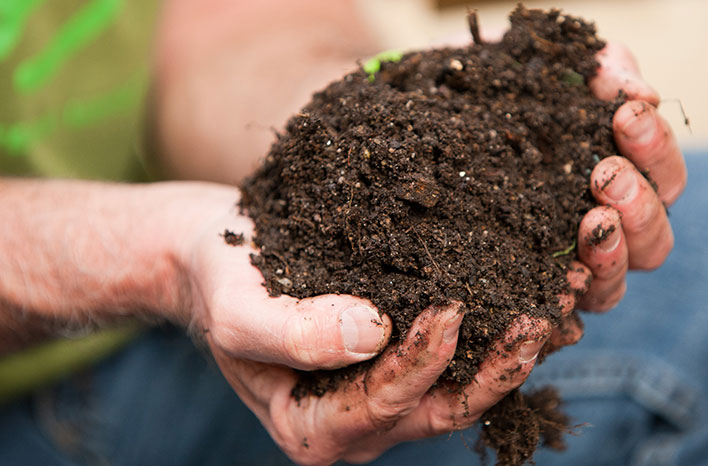
“Easy Backyard Finished Compost | DIY Guide | joe …” from joegardener.com and used with no modifications.
Zero Waste on the Go
Maintaining zero waste practices away from home presents unique challenges but remains entirely possible with preparation. The key is anticipating needs and carrying alternatives to commonly offered disposables. Creating habits around these portable solutions eventually makes them as automatic as grabbing your phone and keys before leaving home.
Building Your Personal Zero Waste Kit
A well-designed zero waste kit adapts to your specific lifestyle while remaining compact enough for everyday carry. The essentials typically include a reusable water bottle, coffee cup, utensil set, cloth napkin, and foldable shopping bag. These five items alone eliminate the most common single-use items encountered daily. For those who frequently dine out, adding a collapsible container for leftovers or takeout prevents styrofoam and plastic packaging waste. Storage options range from dedicated carrying cases to simply tucking items into your existing bag or vehicle. The best system is the one you'll actually use consistently—experiment until you find what works seamlessly with your routine, and consider learning about food waste depackaging methods to further reduce waste.
Navigating Restaurants and Takeout
Dining out presents numerous disposal challenges, but a few simple strategies can dramatically reduce waste. When ordering takeout, request no disposable utensils, napkins, or condiment packets if you'll be eating at home. For dine-in experiences, politely decline straws and excessive napkins when offered. If you know you'll have leftovers, bring your own container or request compostable packaging if available. Some restaurants now offer discounts for customers who bring reusable containers, creating financial incentives alongside environmental benefits. The most effective approach combines clear communication with servers about your preferences and preparedness with your own alternatives to single-use items.
Zero Waste Travel Essentials
Travel often intensifies waste generation, but thoughtful planning can maintain zero waste practices even far from home. Beyond your standard zero waste kit, consider specific travel needs: solid toiletries (shampoo bars, toothpaste tablets, solid deodorant) eliminate plastic packaging and liquid restrictions on flights. A small cloth bag for collecting recyclables until you find appropriate bins prevents good intentions from being thwarted by limited hotel recycling. Research destination recycling and compost programs before travelling, and identify grocery stores with bulk sections for refilling containers. While perfect zero waste may be challenging during travel, these preparations substantially reduce vacation waste without diminishing enjoyment.
Community Disposal Resources
Even the most committed zero waste households occasionally encounter items that don't fit neatly into home-based disposal systems. Community resources fill these gaps, providing specialised disposal options for uncommon or difficult materials. Understanding local infrastructure extends your zero waste capabilities beyond what's possible through individual efforts alone.
Many communities have developed sophisticated resource recovery networks that remain underutilised simply because residents don't know they exist. From repair cafes to tool libraries to specialised recycling programs, these community assets transform “waste management” from an individual burden into a collaborative system designed to maximise resource recovery.
Finding Specialty Recycling Centers
While municipal recycling handles common materials like paper, cardboard, and some plastics, speciality recycling centres manage items requiring dedicated processing streams. These facilities often accept materials like scrap metal, construction debris, automotive fluids, appliances, and rigid plastics beyond what curbside programs permit. Many operate as social enterprises, creating jobs while diverting materials from landfills. The website Earth911.com provides a searchable database of these speciality recyclers by material type and location, making it easier to find appropriate disposal options for unusual items.
Additionally, many manufacturers and retailers now offer take-back programs for their products, particularly for electronics, packaging, and clothing. These extended producer responsibility initiatives place disposal responsibility on manufacturers rather than consumers, encouraging better product design while providing dedicated recycling channels. For instance, learn more about what happens to medical waste to understand similar disposal processes. Check brand websites for information about take-back programs before disposing of products through conventional means.
Beyond formal recycling centres, creative reuse organisations accept diverse materials for educational and artistic purposes. Materials exchange programs, often called “resource recovery centres,” collect industrial by-products, manufacturing scraps, and discontinued items to make them available to artists, teachers, and small businesses at minimal cost. These organisations divert substantial materials from landfills while supporting creative enterprises in your community. Learn more about who pays landfill tax and how it impacts waste management strategies.
Resource Recovery Directory
• Earth911.com – Searchable database of recycling options by material and location
• TerraCycle.com – Recycling programs for hard-to-recycle materials
• FreeCycle.org – Free exchange of unwanted items locally
• LocalHarvest.org – Find community composting programs and food waste solutions
• Repair.org – Directory of repair cafes and right-to-repair resources
• Call2Recycle.org – Battery and cell phone recycling locations
• PlasticFilmRecycling.org – Drop-off locations for plastic bags and film
Buy Nothing Groups and Local Sharing
The growing “Buy Nothing” movement, primarily organised through social media platforms, creates hyperlocal gift economies where neighbours freely exchange goods and services without monetary transactions. These groups function as effective waste diversion systems by connecting people who have items they no longer need with those who can use them. From furniture to food to children's clothing, virtually anything can find a new purpose through these community networks. Unlike traditional donation channels that sometimes landfill unusable items, Buy Nothing exchanges typically ensure items go directly to someone who specifically wants them, maximising the likelihood of continued use rather than disposal.
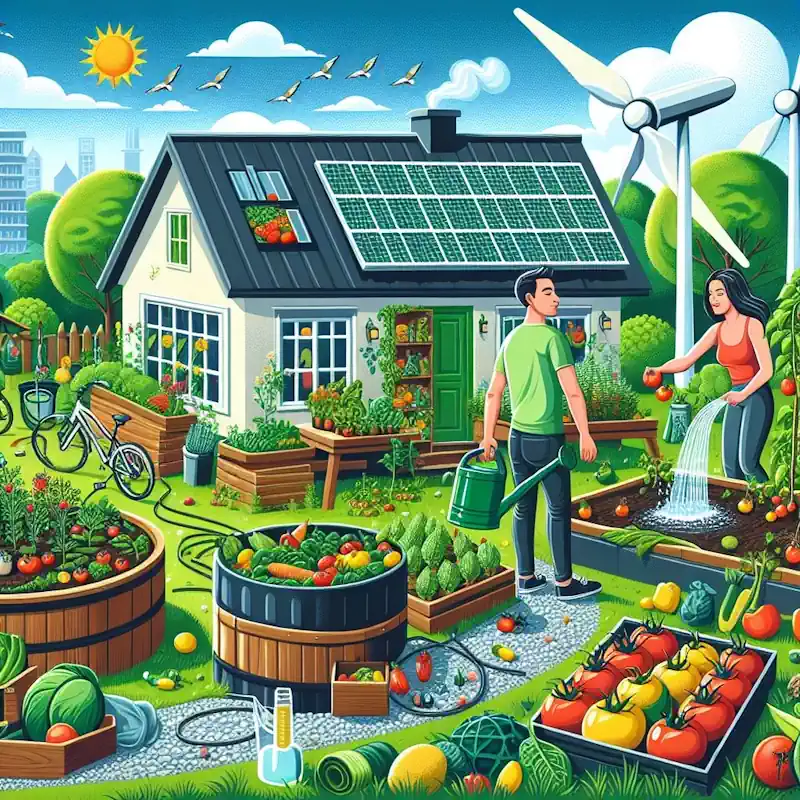
Hazardous Waste Disposal Options
Certain household materials require specialised handling due to their environmental or health impacts. Paint, chemicals, electronics, medications, and batteries all contain potentially harmful substances that should never enter conventional waste streams. Most counties operate household hazardous waste collection facilities or periodic collection events where these materials receive appropriate treatment. While these specialised disposal options require extra effort, they prevent disproportionate environmental harm from relatively small amounts of material.
For medications specifically, many pharmacies now offer take-back programs, and the DEA hosts National Prescription Drug Take-Back events twice yearly. These programs prevent both environmental contamination from drugs flushed into water systems and potential medication misuse. The extra effort to utilise these specialised disposal channels yields environmental benefits far outweighing the inconvenience.
The Ripple Effect: Your Impact Matters
Individual zero waste efforts create impacts extending far beyond personal trash reduction. When you implement better disposal methods, you also influence product manufacturers through purchasing decisions, inspire others through visible examples, and strengthen community waste reduction infrastructure through participation. Every time you choose reusables over disposables or compost instead of landfilling food scraps, you cast a market vote for sustainability that companies increasingly notice and respond to with improved offerings.
Perhaps most importantly, zero waste practices transform participants from passive consumers into engaged citizens who understand resource flows and their environmental implications. This awakened awareness typically extends into other areas of life, catalysing broader sustainable choices in transportation, energy use, and civic engagement. What begins as better disposal methods often evolves into a comprehensive lifestyle transformation that significantly reduces environmental impact while enhancing personal well-being through more mindful consumption. Your individual actions create ripples that, combined with others, become powerful waves of positive change. For more insights, you can explore this guide on zero waste tips.
Frequently Asked Questions
As you begin implementing better zero waste disposal methods, questions naturally arise about specific situations and challenges. These common questions address the practical realities of transitioning toward zero waste living in various contexts.
How do I start zero waste living if I'm on a tight budget?
Zero waste living often saves money over time but may require initial investments in reusable alternatives. Start by using what you already own—repurpose glass jars for storage, cut old t-shirts into cleaning rags, and reuse packaging before recycling it. Focus first on simple, no-cost changes like refusing free disposable items and carrying a water bottle you already own. For necessary purchases, prioritise items that replace frequent disposable purchases (like menstrual products or paper towels) to recoup costs quickly. Consider secondhand options for many zero waste tools—thrift stores often have high-quality glass containers, cloth napkins, and stainless steel items at a fraction of new prices.
Remember that zero waste is a journey, not a destination, requiring immediate perfection. Gradually implement changes as budget allows, focusing on the highest-impact items first. Many zero waste practices actually reduce expenses significantly—cooking from bulk ingredients, repairing items instead of replacing them, and sharing resources with neighbours all create financial benefits alongside waste reduction. Additionally, understanding the pros and cons of waste-to-energy can further enhance your waste reduction strategy.
What's the biggest impact I can make right away toward zero waste?
Food waste composting offers perhaps the most significant immediate impact for most households. When food decomposes in landfills, it creates methane—a potent greenhouse gas. By composting food scraps instead, you not only divert substantial waste volume but also prevent these emissions while creating valuable soil amendment. Even apartment dwellers can compost through Bokashi systems, worm bins, or community compost programs, making this high-impact change accessible regardless of living situation.
Beyond composting, focus on refusing and reducing single-use plastics, particularly beverage containers, shopping bags, and food packaging. These items constitute a large percentage of household waste and have readily available reusable alternatives. Simply carrying a water bottle, coffee cup, and shopping bags eliminates hundreds of disposable items annually with minimal lifestyle adjustment.
Is zero waste possible for families with young children?
Families with children can absolutely practice zero waste principles, though perfect zero waste may require more creativity and flexibility. Start by focusing on the highest-impact, lowest-effort changes like switching to cloth napkins, composting food scraps, and using reusable water bottles. Involve children in age-appropriate ways—even young kids can help sort recyclables or add scraps to compost bins, building environmental awareness early. For baby-specific waste, consider cloth diapers (even part-time use substantially reduces waste), homemade baby food in reusable containers, and toy libraries or secondhand purchases for rapidly outgrown items.
Family-Friendly Zero Waste Strategies
• Cloth diapering services if washing at home seems overwhelming
• Silicone or stainless steel popsicle molds for waste-free treats
• Beeswax wraps instead of plastic wrap for lunches
• Bulk bin snacks in reusable containers instead of individually packaged options
• Water bottles with built-in straws for younger children
• Children's consignment shops for quickly outgrown clothing
• Package-free shampoo bars and lotion bars for bath time
Remember that modeling values often proves more important than achieving perfect waste elimination. Children learn from watching parents make thoughtful choices and explaining the reasoning behind them. When zero waste practices become challenging with children, focus on teaching the principles rather than stressing about perfection.
Many families find that zero waste principles actually simplify parenting by reducing clutter, encouraging quality over quantity in possessions, and teaching valuable skills like cooking, gardening, and mindful consumption. These benefits often outweigh the additional planning sometimes required for waste-free family living.
For school-aged children, work with teachers and administrators on reducing classroom waste through initiatives like package-free lunch programs, classroom composting, or supply sharing systems. These community-based approaches extend waste reduction beyond your household while teaching children collaborative problem-solving skills. For more information on food waste management, explore various food waste depackaging methods that can be integrated into educational programs.
How do I handle gift-giving and receiving in a zero waste lifestyle?
Gift exchanges present unique zero waste challenges that require balancing personal values with social relationships. For giving gifts, focus on experiences (concert tickets, classes, memberships), consumables (homemade treats, locally made food items), or practical items you know the recipient needs. Use reusable or compostable wrapping like fabric gift bags, scarves, or newspaper decorated with natural elements. Communicate your preferences when others ask for gift ideas, suggesting specific items you need or experiences you'd enjoy rather than general “no gifts” requests that might make others uncomfortable.
What should I do with items I already own that aren't environmentally friendly?
The most environmentally responsible approach to existing possessions is usually using them completely before replacing them with more sustainable alternatives. Discarding functional items to purchase “greener” versions typically creates more environmental impact than continuing to use what you have until it reaches the end of its useful life. This approach honors the resources already invested in manufacturing these items while preventing premature waste generation.
For items you no longer need but remain functional, find new homes through donation, community exchange groups, or online marketplaces rather than discarding them. Even items with limited remaining usefulness often have value to someone—art projects, repair practice, or specialized uses can give new purpose to items that seem past their prime for original functions. For those interested in the industry, there are various waste management careers that focus on sustainable practices and resource recovery.
Zero waste disposal methods are becoming increasingly important as we strive to reduce our environmental impact. By implementing sustainable practices, we can minimize waste production and promote recycling and composting. These methods not only help in conserving resources but also reduce pollution and greenhouse gas emissions. For example, understanding the food waste depackaging methods can significantly contribute to reducing landfill waste and recovering valuable resources.


